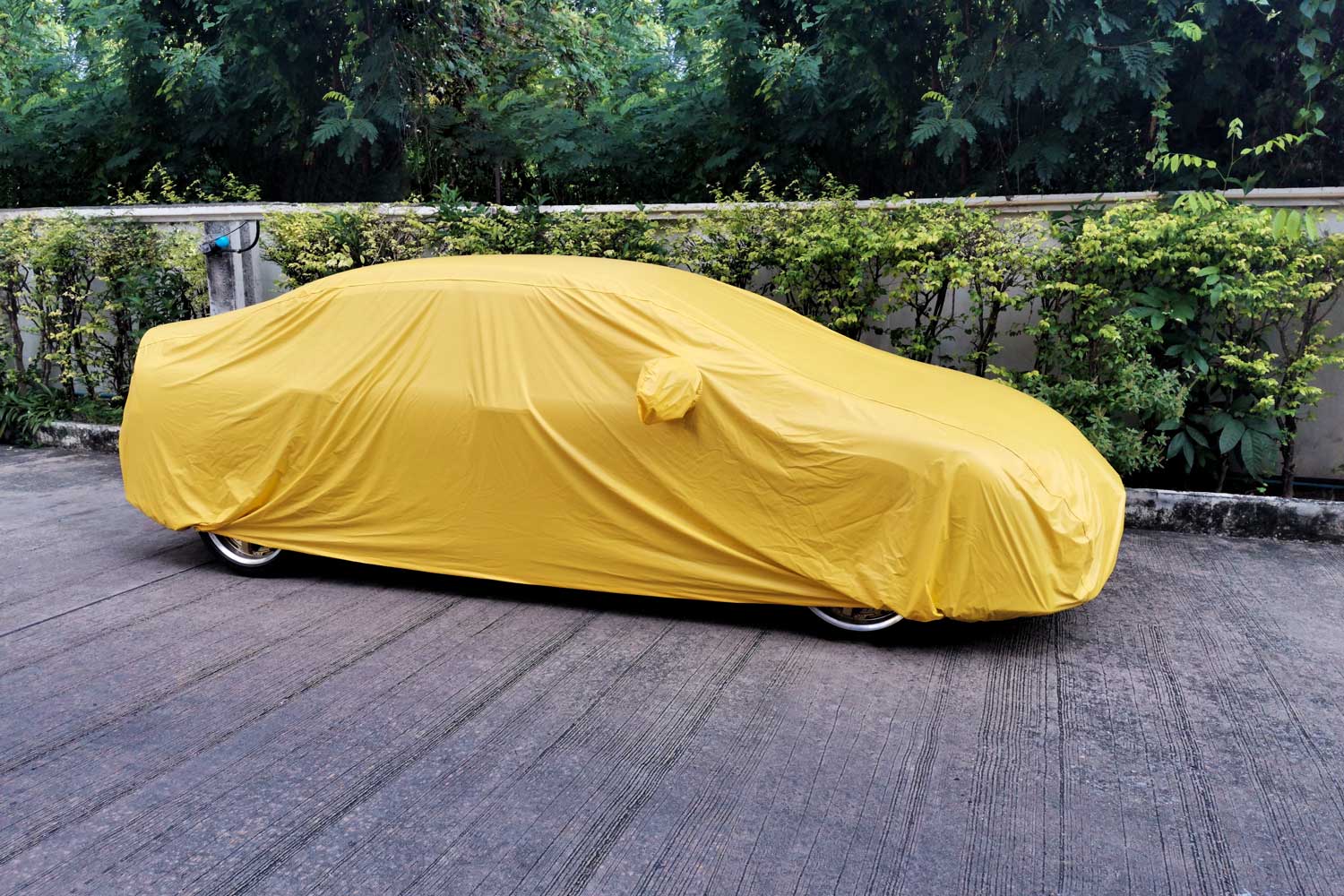What to Look for in an Outdoor Car Cover
Protect your vehicle against sun, rain, and snow with the right cover.
 Shutterstock
Shutterstock
Article QuickTakes:
If you don’t have access to a garage or protected parking spot, a quality car cover is your next best bet for safeguarding your vehicle from the elements during an extended period of storage. Keeping rain, sun, and snow off the paint can help the car to look like new for years to come—but only if you choose the right cover for the job.
Here’s how to decide which cover is the correct choice for your car-storage needs.
The Type of Weather
The most important consideration when choosing an outdoor cover for car storage is determining what type of weather conditions you’re protecting against. If you’re in a dry, dusty area that sees a lot of sun all year, you likely won’t need a waterproof cover. On the other hand, if rain, snow, and sleet are seasonal regulars, then keeping out moisture is of prime importance.
The Right Fabric
In a warm, dry climate, you should focus on a car cover that blocks UV light and also breathes well. The latter helps prevent heat from building up under the cover and potentially causing damage to your vehicle’s paint or interior. Often this means looking for a material that is reflective and features a microporous layer that helps circulate air—but not dust—under the cover.
When dealing with wet car-storage conditions, avoid a cover that claims to be “waterproof.” A truly waterproof material blocks moisture to the point where, should any of that moisture make its way under the cover (even in the form of condensation), it would be held against the vehicle’s finish instead of evaporating—potentially causing issues like corrosion. Instead, look for a water-resistant cover that is also breathable, which will help wick moisture away by circulating air under the cover itself.
One Size Fits All vs. Custom Fit
Outdoor covers are exposed to wind, which means they must be as snug as possible to prevent movement against the paint while a vehicle is in storage. A car cover that moves back and forth against body and trim panels can easily cause scratches and scuffs over time.
A custom-fit car cover that is designed to the exact shape of your automobile is the best way of ensuring minimal movement due to wind. While a one-size-fits-all approach might get the job done at a basic level, a cover that offers mirror pockets and tucks directly under the front and rear bumpers with very little slack provides greater protection. Make sure to check for “gust straps,” which help prevent the cover from being torn off in severe weather.
What to Expect on Price
As with most car products, covers come in a range of prices. A generic universal outdoor car cover can start around $50, while a custom-fit cover from a respected brand like Covercraft may cost more than twice that amount. More specialized outdoor covers could be priced as high as $500 for larger vehicles.



